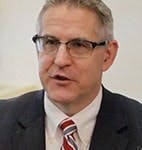Central Hudson Gas & Electric is seeking approval to offer microgrid subscriptions, as part of a $46 million rate hike request filed with state regulators July 25.
The New York utility would design, build and operate microgrids at the request of customers, who would pay a fee for the service on their utility bills. The fee would be determined by location and depend on the extent and type of microgrid service.
“We will be proposing a form of microgrid that could be installed to serve critical, premium power locations that could consist of colleges, hospitals, business parks and even neighborhoods,” said Michael Mosher, Central Hudson’s vice president of regulatory affairs.
The idea for microgrid subscriptions comes in response to Governor ’s push to prepare the electric grid for any repeat of severe storms like Superstorm Sandy, which left some parts of New York without power for weeks.
Interested in microgrids? You’re not alone. Meet others in the industry on our LinkedIn Group, Microgrid Knowledge
Central Hudson already has a microgrid in a remote area known as Frost Valley. It has operated successfully as an isolated microgrid during a dozen major and minor storms since February 2010, the utility said in the rate application filed with the New York Public Service Commission.
In choosing the sites, the utility will seek areas where a microgrid will allow it to forego building miles of infrastructure that improves service to only a small number of customers.
Michael Mosher, Central Hudson
Solar gardens, DR, smart meters
The two-year rate plan, which requires regulatory approval, includes several other innovations, such as community solar, targeted demand response and opt-in smart meters.
To promote community solar (solar gardens), the utility plans to build, own and operate 1-3 MW solar farms. Customers could purchase energy by way of shares in the facilities, which would be located near existing Central Hudson substations. New York is a restructured state, so Central Hudson must win approval from state regulators to own the solar farms. The utility cannot otherwise own power plants.
The utility expects the solar farms to produce power at half the cost of rooftop solar, on a price per power output basis. It would site the solar farms where they will provide the most grid support.
The targeted demand response program will offer incentives for customers in select areas to lower energy use during peak periods. Central Hudson will calculate incentives based the avoided costs for the area.
A voluntary program, Central Hudson’s DR effort would focus on small businesses, commercial parks, campuses and communities. A demand response program already exists for industrial customers through the New York Independent System Operator.
The smart meter program also will be voluntary. Customers who join the program would pay an installation price plus a monthly charge, and would be provided access to a web portal to view their usage.
Part of bigger plan
The two-year rate hike would cover far more than the tech improvements. Property tax increases account for 40 percent of the new revenue the utility seeks. Central Hudson says it also needs to increase rates to pay for new electric and gas infrastructure, some of which was installed in the 1920s.
Central Hudson serves 300,000 electric customers and 78,000 natural gas customers in New York. It is a subsidiary of Fortis, the largest gas and electric investor-owned utility in Canada.
Did you find this news useful? Get more by signing up for our free Microgrid Knowledge newsletter.







